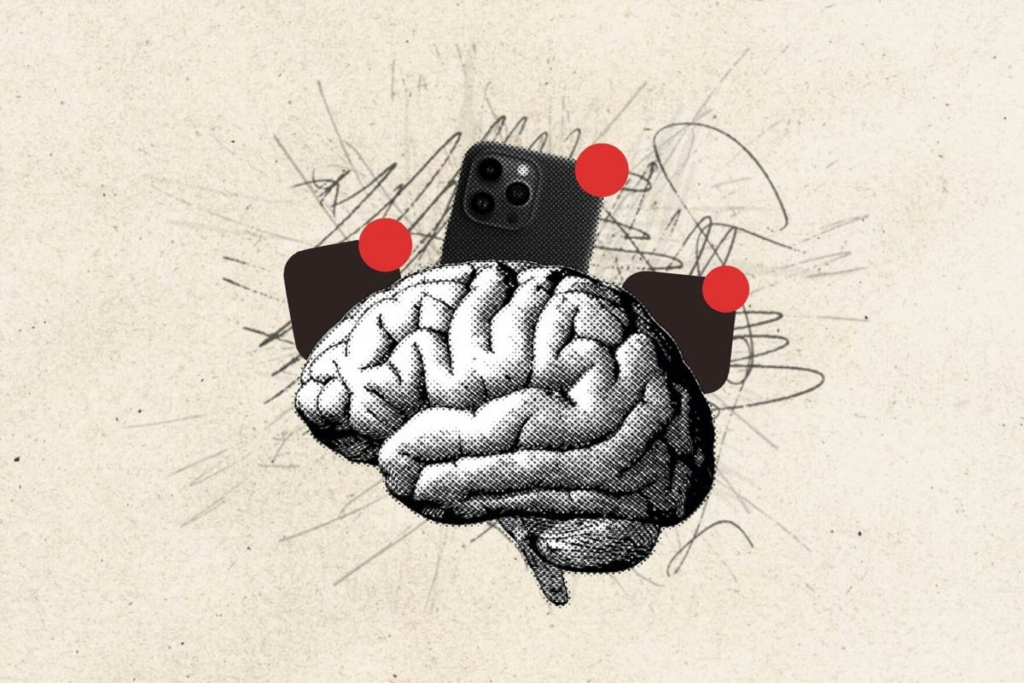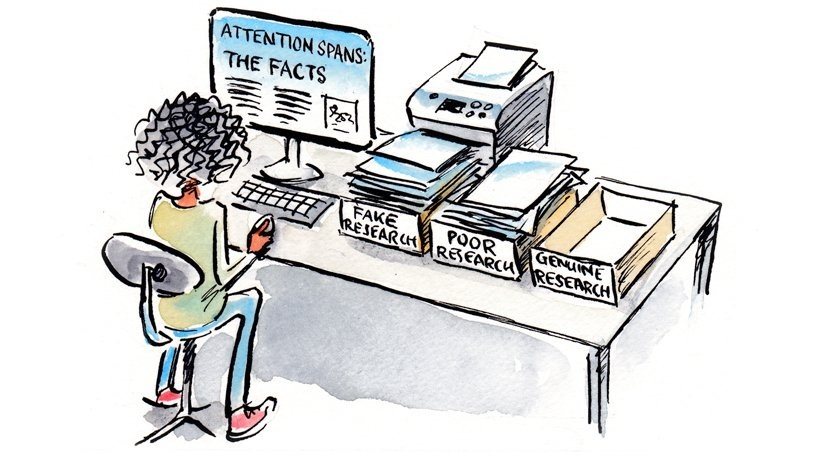The Attention Span Dilemma: How to Keep Visitors Engaged in a Fast-Paced Online World
Welcome to the world of digital publishing, where the battle for your reader's attention is fierce and relentless.
In this high-speed online environment, grabbing and keeping that attention is more challenging than ever.
But don't worry, it's not all doom and gloom. As a publisher, you have powerful tools and strategies at your disposal to engage even the most fast-paced readers.Let's face it: nowadays, people are juggling a lot, and their attention is split in a dozen directions.
This reality doesn't have to be a setback. Instead, it's an opportunity to sharpen your skills and learn how to communicate effectively in this new landscape.
At Jubna, our guide is designed to be your companion in this journey, offering clear, straightforward strategies that any publisher can implement to connect with their audience in meaningful ways.
You'll discover not just how to catch their fleeting attention, but how to create content that resonates, engages, and makes them want to come back for more. Let's dive in!
Understanding the Shorter Attention Span in Today's Digital World
Let's break down why this is happening, with some interesting research findings to back it up.
People now spend on average 3 hours and 15 minutes on their smartphones each day, but only 28% of website content is read thoroughly.
This statistic by Microsoft cooperation underscores that most people tend to skim through information rather than fully engage with it.
What then is the root cause of this?
1. Too Much Information Everywhere
Think about how much information you see and read everyday.
That's a lot, right? A study from the University of California, San Diego, points out that the average person in the U.S. consumes around 100,500 words and 34 gigabytes of content each day.
That's like reading a novel everyday!
With so much to take in, it's no wonder our brains find it hard to stick with one thing for too long.
2. Our Phones Are Changing Us

Mobile phones are a big part of our lives. They keep us connected and informed, but they also affect our attention.
A study by Microsoft Corporation found that since the early 2000s, the average attention span has dropped from 12 seconds to just 8 seconds.
That's even shorter than the attention span of a goldfish! This change is partly because we're used to getting information quickly and moving on to the next thing on our phones.
3. We Love Short and Snappy Content
The way we like to watch and read things has changed too. Short videos and posts that get straight to the point are really popular.
Statistics show that short-form videos are one of the most watched types of content online. Services like TikTok and Instagram Reels are all about quick, engaging videos.
This shows that many of us prefer content that's fast and easy to digest.
4. Neurological Factors

From a neurological perspective, constant digital stimulation is rewiring the way our brains process information.
The brain adapts to the rapid switching of focus that digital media often requires, potentially leading to a decrease in the ability to sustain attention on a single task or piece of content.
5. The Search for Instant Gratification
Today's digital environment has fostered an expectation for instant gratification. Users often seek quick answers and fast entertainment, leading to a preference for content that is immediately rewarding but not necessarily rich in depth or complexity.
How Publishers Can Solve the Attention Span Problem

Addressing the issue of low attention spans in digital publishing requires a multifaceted approach.
Here's an expanded view of each strategy, aimed at helping publishers effectively engage their audience:
1. Understanding the Modern Consumer’s Attention Span
In the digital age, attention spans have shrunk as people face an overload of information.
Publishers need to adapt by creating content that's not only interesting but also quick and easy to digest.
This means focusing on creating relevant, immediate content that grabs attention right away.
Using catchy headlines, engaging visuals, and clear, concise language will help make your content stand out in a busy digital world.
2. The Power of Personalized Content Feeds
This strategy involves leveraging data analytics and AI to understand user interests and create content feeds that resonate on a personal level.
Personalized content feeds give users a sense of control and relevance, making them more likely to engage with the content.
Put your ads in front of millions of readers. Join Jubna todayIncreases the likelihood of content consumption and fosters a deeper connection between the user and the publisher.
It's about delivering the right content to the right person at the right time, making each interaction meaningful and valuable.
3. Incorporating Multimedia and Interactive Elements
Videos, infographics, and interactive quizzes break the monotony of text-heavy content and cater to various user preferences.
These elements not only make content more visually appealing but also enhance understanding and retention.
This approach is particularly effective in storytelling, where visual and interactive elements can bring a narrative to life.
By incorporating a mix of media, publishers can create a dynamic content experience that appeals to a wider audience and holds their attention longer.
4. Brevity and Clarity in Content
Content must be succinct yet informative, delivering key messages without unnecessary filler.
This involves structuring content into easily digestible segments, using clear language, and focusing on the essence of the message.
The emphasis should be on providing value in every sentence, ensuring that the content is both accessible and engaging to a time-constrained audience.
5. Maximizing Engagement with Speed and Simplicity
Slow-loading pages and complicated website designs are major deterrents for users.
Enhancing website performance and streamlining content delivery can significantly boost engagement.
Optimizing for mobile responsiveness is also key, considering the growing number of users accessing content via smartphones.
A simple, intuitive design that facilitates easy navigation, and a clutter-free interface with a clear call to action encourages users to explore and engage with the content.
The focus should be on making the user's journey through the content as seamless and straightforward as possible, minimizing obstacles and maximizing enjoyment.
6. Leveraging the Infinite Scroll
The infinite scroll feature, popularized by social media platforms, can be a powerful tool for keeping users engaged. Although it is subject to testing to see if it will work for your platform.
It encourages prolonged interaction with the site, potentially increasing the time users spend engaging with content.
However, it's important to balance the quantity of content with quality. An infinite scroll should not lead to a dilution of content value.
The key is to provide a steady flow of relevant, high-quality content that keeps the user interested and engaged. This approach requires a strategic content plan that ensures a consistent and engaging user experience.
7. Innovative Content Formats and Technologies
Exploring new avenues like augmented reality (AR), virtual reality (VR), and interactive storytelling can provide unique and memorable experiences.
These technologies offer new ways of engaging with content, making it more interactive and immersive.
They allow publishers to tell stories in a more dynamic and engaging way, capturing the audience's attention in a manner that traditional formats cannot.
8. Data-Driven Insights for Improved Content Strategy
This approach involves collecting and interpreting data to understand what resonates with the audience and using those insights to guide content creation.
By leveraging data, publishers can make informed decisions about the type of content to produce, the best formats to use, and the most effective distribution channels.
This involves an ongoing process of experimentation, learning from successes and failures, and adapting strategies accordingly.
This data-centric approach ensures that content is not only relevant and engaging but also aligned with the audience's evolving preferences and behaviors.
Conclusion: Embracing the Attention Span Challenge
We've explored the intricate maze of capturing and retaining our reader's fleeting attention. From understanding the shrinking attention span to harnessing the power of innovative content and technology, we've uncovered the strategies that can transform the way we engage with our audience. It's clear that the fast-paced digital world isn't slowing down, and neither should we.
In this fast environment, our ability to adapt and evolve is what will define our success.
It's about being nimble, creative, and always in tune with our audience's needs.
The challenge of the attention span dilemma isn't just a hurdle to overcome; it's an opportunity to innovate, to stand out, and to connect with our readers in ways we never thought possible.
So, as we bring this topic to a close, let's ponder one final thought: In a world where attention is the most sought-after currency, how will you make your content not just seen, but truly unforgettable?